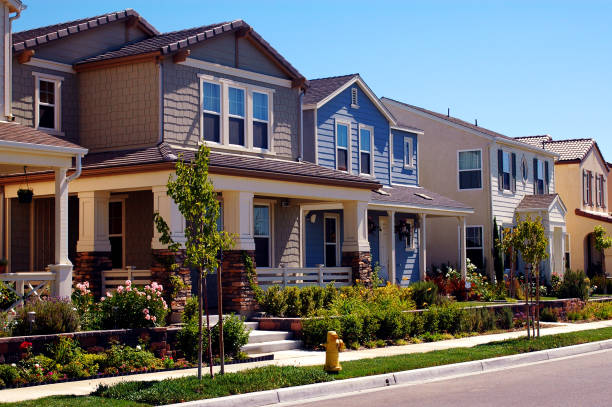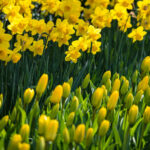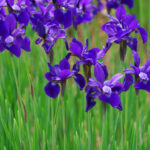The front garden serves as the first impression visitors and passersby have of a home. It’s not just a decorative space but an extension of the home’s character and personality. The front garden can be a visual treat, a wildlife sanctuary, or even a functional space for homeowners. With thoughtful design and the right elements, the front garden can transform into a welcoming introduction to any house. This article explores the various aspects of front gardens, including design principles, plant choices, uses, and how to create an inviting and sustainable space.



1. The Role of a Front Garden
A front garden is not just a patch of greenery but plays several roles:
- Curb Appeal: The front garden is a major contributor to a home’s curb appeal, which can increase property value and create a welcoming atmosphere. A well-maintained and thoughtfully designed garden can make a home more attractive.
- First Impressions: The front garden is the first thing people see, so it often sets the tone for what they expect from the rest of the property. Whether it’s formal or whimsical, the design can reflect the homeowner’s taste and the style of the house.
- Functionality: Beyond aesthetics, front gardens can have functional elements like pathways, lighting, and seating areas. They can also serve as a buffer from the street, providing privacy and reducing noise.
- Environmental Benefits: A front garden can contribute to environmental sustainability by supporting local wildlife, improving air quality, and managing water runoff.
2. Design Principles for a Front Garden
Designing a front garden requires balancing beauty, functionality, and ease of maintenance. Here are some design principles to keep in mind:
a. Symmetry and Balance
Symmetry is a common design element in front gardens, especially those that aim for a formal or traditional look. Balanced plantings on either side of the front door or pathway can create a harmonious and structured appearance. However, asymmetrical designs can also be effective, especially in modern or cottage-style gardens, where a more relaxed and natural feel is desired.
- Formal Gardens: In formal gardens, pathways are often straight, and plants are pruned into neat shapes. Boxwood hedges, roses, and topiary are common choices for a symmetrical look.
- Informal Gardens: Informal designs may have curved pathways, a mix of plant heights, and a more natural arrangement. These gardens can feel welcoming and free-spirited, using plants that spill over walkways or grow in organic clusters.
b. Scale and Proportion
The scale of the front garden should complement the size of the house. Small gardens in front of large homes can feel out of proportion, while overly large plantings in front of small houses may overwhelm the space. Choosing plants and features that are proportional to the size of the house ensures that the garden enhances rather than detracts from the home’s appearance.
- Plant Size: Tall trees and large shrubs should be placed strategically to avoid blocking windows or doors. Smaller plants or ground covers are ideal for the front of flower beds to maintain sightlines to the home.
- Focal Points: A focal point, such as a tree, fountain, or a well-placed planter, can draw attention and provide visual interest. Focal points should be positioned to complement the architectural features of the home, such as the front door or a bay window.
c. Color Scheme
The color scheme of the front garden should harmonize with the colors of the house. Plants, flowers, and even garden features like pots or benches can reflect and complement the home’s exterior.
- Monochromatic Schemes: Using a single color in varying shades can create a sophisticated and cohesive look. For example, white flowers like lilies or roses can provide an elegant contrast to dark-colored homes.
- Contrasting Colors: Bright, contrasting colors, such as purple and yellow or red and white, can create a lively and dynamic garden. These bold choices can work well in informal or cottage gardens.
- Seasonal Color: Planting a mix of flowers and shrubs that bloom in different seasons ensures year-round interest. Spring bulbs, summer perennials, autumn foliage, and winter evergreens can keep the garden vibrant throughout the year.
d. Pathways and Access
Pathways are essential in the front garden to guide visitors to the front door. The material and design of the pathway should complement the style of the garden and the home.
- Straight Paths: A straight path leading directly to the front door is often seen in formal gardens. Materials like brick, concrete, or stone create a clean and crisp look.
- Curved Paths: In more relaxed garden styles, curved paths can add a sense of discovery and charm. Gravel, stepping stones, or rustic pavers work well in these settings.
- Accessibility: The path should be wide enough for easy access, with smooth, even surfaces to accommodate all visitors, including those with mobility challenges.
e. Lighting
Outdoor lighting enhances both the safety and beauty of the front garden. Well-placed lights can illuminate pathways, highlight architectural details, and showcase plants at night.
- Pathway Lights: Low lights along the edges of the path help guide visitors safely to the front door.
- Spotlights and Uplighting: Spotlights can be used to highlight a focal point, such as a tree or sculpture while uplighting can emphasize the façade of the house or a garden feature.
- Solar-Powered Lights: Solar lights are a sustainable option that requires minimal maintenance and wiring. They’re perfect for accentuating plant beds or garden borders.
3. Plant Selection for the Front Garden
Choosing the right plants is crucial for creating a beautiful and low-maintenance front garden. Consider factors like climate, soil type, and the amount of sunlight the garden receives throughout the day.
a. Trees and Shrubs
Trees and shrubs provide structure and height to the front garden. They can also offer privacy and shade, as well as a habitat for birds and other wildlife.
- Ornamental Trees: Small to medium-sized trees like Japanese maple, dogwood, or cherry blossoms can add beauty without overwhelming the space. Their seasonal interest, from spring flowers to autumn foliage, makes them popular choices.
- Evergreens: Evergreens like boxwoods, junipers, and yews maintain their foliage year-round and provide a constant backdrop to flowering plants. They’re excellent for creating hedges or borders.
- Flowering Shrubs: Shrubs like hydrangeas, azaleas, and roses can add color and fragrance to the garden, especially in the spring and summer months.
b. Perennials and Annuals
Perennial plants return year after year, making them a great investment for the front garden. Annuals, on the other hand, bloom for one season but often provide more vibrant colors.
- Perennials: Lavender, daylilies, and hostas are popular perennials that are easy to maintain. They offer long-lasting blooms and often require less water and care than annuals.
- Annuals: Petunias, marigolds, and pansies are common annuals that can be used to fill in gaps between perennials or add a pop of color. Their short lifespan allows for flexibility in changing the look of the garden each year.
c. Ground Covers
Ground covers like ivy, creeping thyme, and sedum are perfect for filling in spaces between larger plants or covering bare soil. They can help reduce weeds and create a lush, green carpet.
d. Container Gardening
For those with limited space or poor soil conditions, container gardening is an excellent option. Pots and planters can be placed on porches, steps, or along pathways, allowing for flexibility in plant arrangement and easy access for watering and care.
- Pots and Planters: Containers come in a variety of styles and materials, from terracotta to ceramic to plastic. Grouping different-sized pots can create a dynamic and layered look.
- Portable Plants: Plants in containers can be moved around to suit changing conditions or personal preferences, offering a versatile gardening solution.
4. Uses of a Front Garden
While aesthetics are a primary focus of many front gardens, they can also serve functional and environmental purposes.
a. Privacy and Screening
Strategically placed trees, shrubs, or hedges can provide a sense of privacy for homeowners, particularly if the house is close to the street or neighboring properties. Tall plants near windows or along property lines can create a natural barrier without the need for fences.
b. Wildlife Habitats
Front gardens can attract and support local wildlife by providing food, water, and shelter. Bird feeders, bee-friendly plants, and small water features can create a haven for birds, butterflies, and beneficial insects.
c. Rain Gardens
A rain garden is a sustainable option for front gardens that helps manage water runoff by capturing and absorbing rainwater. These gardens are often planted with native species that thrive in both wet and dry conditions, reducing the risk of flooding and promoting groundwater recharge.
5. Maintaining the Front Garden
A well-maintained front garden requires regular upkeep, but with proper planning, maintenance can be kept manageable.
- Watering: Choosing drought-tolerant plants can reduce the need for frequent watering. Drip irrigation systems or soaker hoses can provide efficient water distribution.
- Pruning: Regular pruning of trees, shrubs, and perennials helps maintain their shape and promotes healthy growth. It also prevents plants from becoming overgrown and obstructing pathways or windows.
- Weeding and Mulching: Keeping weeds under control is essential for a tidy garden. Mulching around plants helps suppress weeds, retain moisture, and improve soil health.







